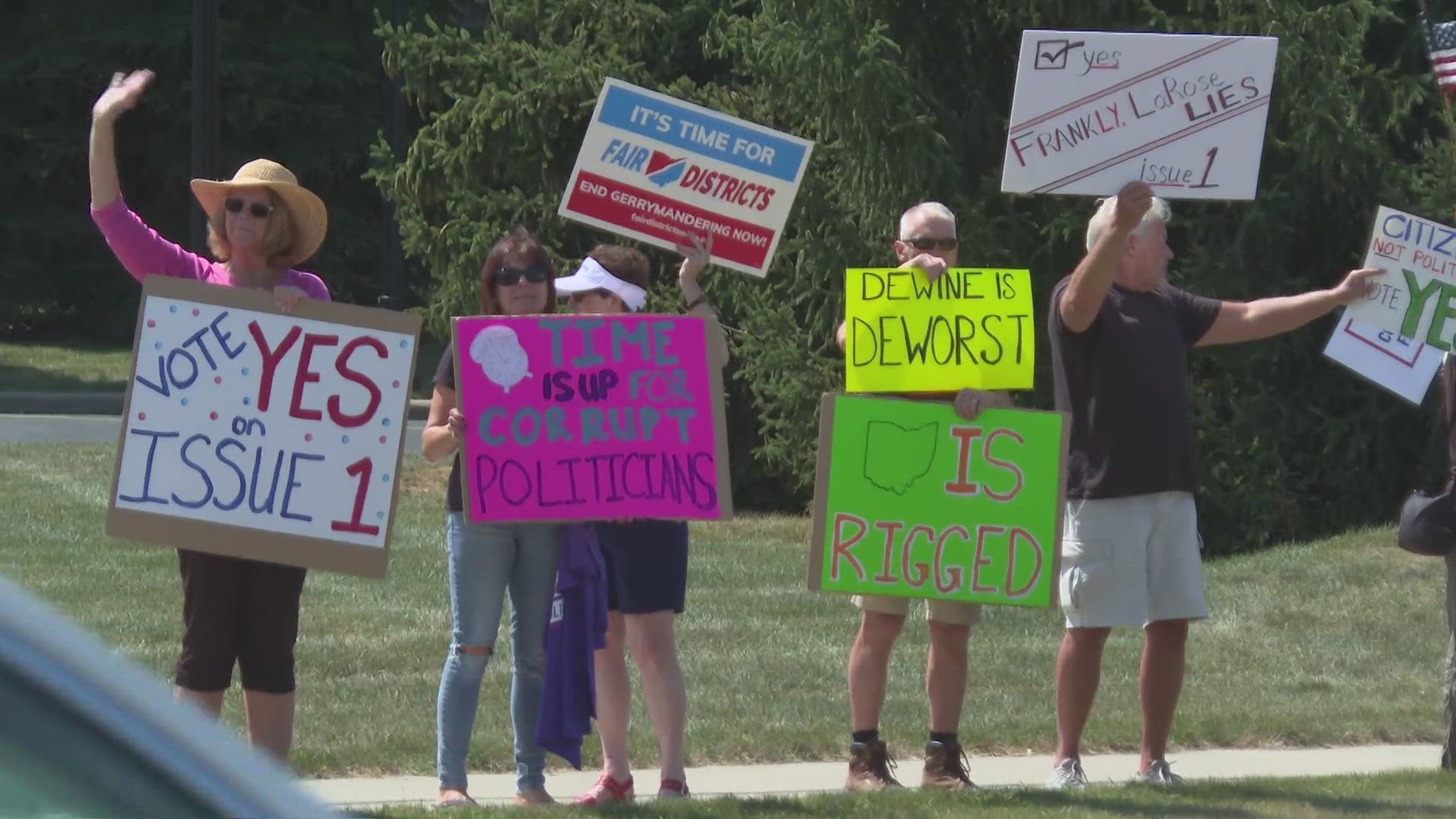CLEVELAND — Less than six weeks out from the November 5 general election in Ohio, the debate over Issue 1 — a redistricting reform proposal — ramped up this week, with both sides dropping new ads and opponents arguing the amendment would lead to the very thing it claims to end: gerrymandering.
The proposed constitutional amendment renews a decades-old debate about the political mapmaking process. In November, voters will decide whether to put that process of drawing legislative districts into the hands of citizens.
A “yes” vote on Issue 1 would create a citizen’s commission made up of five Republicans, five Democrats and five independents. Lawmakers on the state ballot board would choose four retired Ohio judges — 2 from each major party — who would then choose the 15 members from a demographic and geographic cross section of the state. Politicians, lobbyists, and party officials would not be allowed serve on the commission.
“Because when [politicians] draw them, they draw them to benefit themselves. It doesn’t matter what party they’re in,” said Carol Canavan, with the Canton Area League of Women Voters.
The citizen’s commission would replace the current Ohio Redistricting Commission made up of seven elected officials. According to its website, the commission was created by an amendment to the Ohio Constitution, which 71% of Ohio voters approved in November 2015.
“Look, state Issue 1 sounds great. But it is the ultimate in gerrymandering,” Gov. Mike DeWine told 3News’ Matt Rascon at a recent, unrelated event in northeast Ohio.
DeWine says he’s okay with removing politicians from the process, but he doesn’t agree with the way Issue 1 would do it.
“I think people are sick of having politics a part of it. State Issue 1 demands that politics be included in this. It’s not right,” he said.
The rules for drawing maps would require districts to correspond closely to the party preferences of Ohio voters. That would involve calculating how many districts Democrats and Republicans would have won in general elections over the last six years.
“You’re going to end up with crazy-looking districts. You’re going to see cities split up, you’re going to see counties split up,” DeWine claimed. “To achieve this goal of hitting a certain number of Democrats and a certain number of Republicans. That’s just not what we should be doing.”
Supporters of Issue 1 point to the current system that has already divided towns and counties. They argue the proposal would make it “unconstitutional to draw districts that discriminate against or favor any political party or politician.” Nine members would have to approve the redistricting maps and the public could weigh in on the process during several required public meetings.
“It’s the way that we can finally close the loopholes and get gerrymandering ended in Ohio. When we have gerrymandering, the politicians get to pick their voters, we don’t get to pick them,” Canavan said while standing on the street with a handful of demonstrators in support of the Issue 1.
“We want people to be aware of this issue. It’s so critical to our democracy,” she said.
No matter who you think should draw the maps, the decision will ultimately be in the hands of voters this November. If approved, it would go into effect 30 days later and the new citizens commission would immediately replace the current one and create new legislative districts next year.
Read the full Issue 1 text below:

